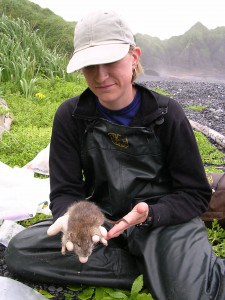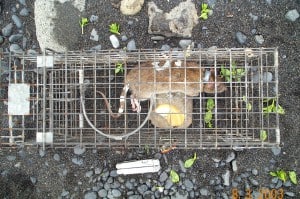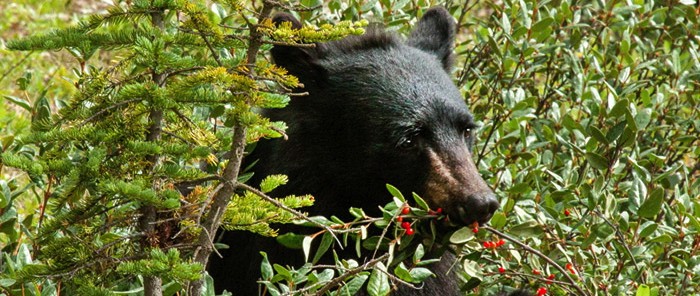Share this article
What do Yosemite Bears and Aleutian Rats Have in Common?
Figuring out exactly what animals eat is one of the best ways to understand how ecosystems work and, if necessary, conserve them. But the problem is that animals, like humans, are complicated — their tastes change depending on a number of variables such as seasonal changes and whether they are male or female.
To understand some of the ways animals respond to changes in their environment, researchers created a new model that makes use of stable isotope analysis to determine the proportions of different things in the diets of black bears (Ursus americanus) in California’s Yosemite National Park and Norway rats (Rattus norvegicus) in the Aleutian Islands, Alaska.

Study author Carolyn Kurle holds a Norway rat on the Aleutian Islands in Alaska. Kurle analyzed stable isotopes to determine how the omnivorous rodents survived on the islands without many year-round sources of meat. Image Credit: Shauna Reisewitz
“The reason we used data from both these animals is because they are both omnivores,” said Carolyn Kurle, assistant professor of biology at the University of California, San Diego and coauthor of a new study in Methods in Ecology and Evolution. “They both eat huge varieties of things.”
Kurle focused her work on the rats, which are an invasive species introduced into some of the islands in decades past. The rats laid waste to seabird populations on islands after arriving — so much so that the islands with rats rarely have birds. But after the damage to bird populations was done, Kurle wanted to know how the rodents managed to persist without that food source.
She took tissue samples from the rats and found through stable isotope analysis that they subsisted predominantly on plant matter from the bushes and shrubs on the stark islands. But during the late summer and fall, the rats gorged themselves on amphipods that turned up as storms in that season washed kelp onto the shore. “They rely on this pulse of marine protein,” Kurle said.
Meanwhile in Yosemite, postdoctoral fellow and lead author of the study Jack Hopkins analyzed the stable isotopes of diets of black bears and found that the bears subsisted mostly on pine nuts, acorns, and plants without much reliance on insects, as was previously thought.
“We need to know what they’re eating in Yosemite,” Kurle said of the black bears. Park managers can then determine how much human garbage and food the bears are eating, and can give some indication of whether efforts to limit bears’ access to this food source is working.
They also found diets differed between male and female bears.

Caught like a rat in a trap. Researchers found the rats ate plant matter for most of the year, only splurging on animal prey when amphipods appeared on the shores due to kelp in the late summer and fall. Image Credit: Carolyn Kurle
“Female bears foraged for high-fat acorns and pine nuts more heavily than males, suggesting that females likely need these seeds for reproduction,” Hopkins said in a press release. “This could be a real problem for Sierra [Nevada] black bears in the future if blister rust continues to kill sugar pines and sudden oak death moves in from the coast.”
Kurle said that this could also mean that females eat different foods than males as a way to avoid them while their cubs are around, since male bears are known to kill infant bears.
She said that both of these kinds of studies give us a better understanding of how ecosystems work, and how managers can help with conservation.
“They can help us understand what animals with conservation interest are foraging on. What they’re eating and why we should care.”
Header Image: A black bear feeds on berries in Yosemite National Park, Calif. A new study found that bears subsist primarily on plants, pine nuts and acorns in the park.
Image Credit: millermountain








